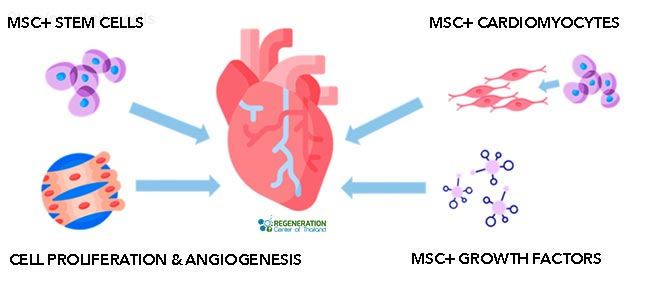Table of Contents
The authors note difficulties that continue to be, including enhancing the engraftment success and cell survival. Due to the fact that the ISCI and Miller College are leaders in this field, the authors likewise emphasize the need to systematize interpretations and results actions in the area. "The Hare Lab continues to be at the leading edge of pioneering brand-new therapies in this critical clinical domain.
Now we are exploring just how to harness such stem cells to aid patients heal their own broken hearts."The study is guided by the Cedars-Sinai Heart Institute, with the partnership of the Johns Hopkins University, where Dr. Marbn worked prior to signing up with Cedars-Sinai in 2007. The 24 people participating in the study have hearts that were damaged and marked by cardiovascular disease.

It takes around four weeks for the cells to increase to numbers sufficient for therapeutic usage, about 10 to 25 million. In the 3rd and last step, the now-multiplied stem cells are reintroduced right into the client's coronary arteries during a second catheter treatment. All people in the research had to have knowledgeable cardiovascular disease within 4 weeks before enlisting in the research study task.
Later on this summer, it is anticipated that 12 more people will undergo procedures to receive 25 million stem cells, while 6 additional clients will be kept track of as controls. The initial person, Kenneth Milles, a 39-year-old controller for a tiny building and construction company in the San Fernando Valley, experienced a cardiovascular disease on May 10 as a result of a 99 percent blockage in the left anterior descending artery, a significant artery of the heart.
The procedure to expand the cardiac-derived stem cells associated with the research was created by Marbn when he was on the faculty of Johns Hopkins University. The university has declared a patent on that intellectual residential property, and has certified it to a firm in which Dr. Marbn has a monetary rate of interest.

All funding was derived from the National Institutes of Health, the Donald W. Reynolds Structure and Cedars-Sinai Medical. Marbn holds The Mark Siegel Family Structure Endowed Chair and Supervisor of the Heart Institute.
Breakthroughs in stem cell therapy for Heart Disease — what the science says
Cardiac arrest is an acute or persistent problem that impacts millions of people worldwide. One of the most frequently approved approaches of treatment usually consist of signs and symptom management and medication taken for life, so the problem brought on by the condition is hefty. Stem cell therapy for heart failing has become a brand-new way to treat and handle the core of the condition.
Nonetheless, stem cell therapy can help to reduce symptoms and boost the heart's pumping capacity. This therapy makes use of the capacity of stem cells to self-regenerate and self-heal. Complying with the admission of stem cell injections for congestive heart failing, several devices come right into play: Stem cells for cardiac arrest advertise the formation of specialized cardiac muscle mass cells and regrow harmed cells, boosting the heart's pumping capacity.
These are types of grown-up stem cells that are gotten from bone marrow, fat tissue, and skin cells. These are the most common and well-researched kinds of stem cells.
These are obtained from embryos and have the pluripotent potential to transform into any sort of cells, including cardiac ones. The primary trouble with these cells is that, as they are taken from embryos, they have lots of honest and lawful constraints and are just made use of in specific circumstances. for the factors stated above.
Regenerative injections targeting Atherosclerosis with minimal downtime
These cells stem in the heart and are well-suited to heart repair work. Clinical Consultant, Swiss Medica medical professional The application and therapy of stem cell therapy consists of five actions: Individuals begin with an on the internet assessment with our medical consultant and are after that assessed by a cardiologist, that will certainly obtain the essential medical history, do blood examinations, and request imaging researches to figure out whether stem cell treatment for heart failing is a viable option.
We carry out stem cells with painless stem cell injections for congestive heart failing. A highly trained physician will certainly inject processed stem cells into the bloodstream; the entire procedure takes much less than an hour. After ending up the congestive heart failing stem cell therapy procedures, our clients will certainly be checked for any type of complications and outcomes.
Navigation
Latest Posts
Can stem cells help with Arrhythmias you should know about
How to access stem cell therapy focused on Atherosclerosis
Are there supportive options for Heart Disease in today’s clinics?